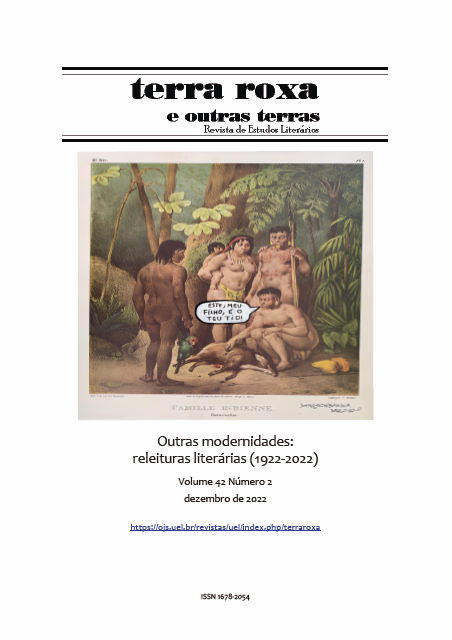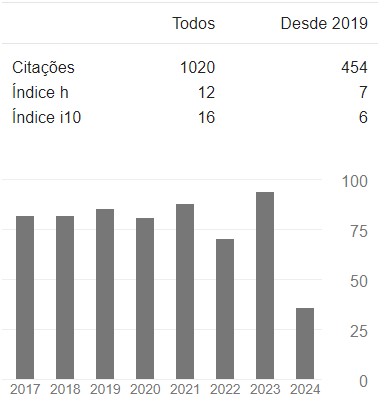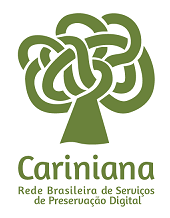Hallucinated city: kitsch and desvairismo
DOI:
https://doi.org/10.5433/1678-2054.2022vol42n2p9Keywords:
Hallucinated city, Mario de Andrade, kitsch, desvarismoAbstract
“My claims? Freedom” (Andrade 2019: 11). Amid the modernization process of São Paulo, a process filled with contradictions and conflicts, Mário de Andrade publishes his Pauliceia desvairada, translated as Hallucinated City, a complex book, which combines elements of mass culture and popular culture to create a Brazilian avant-garde art. In this paper, we propose that the 1922 book, so close to the logic and aesthetics of technical reproducibility, can be seen as a way of studying the emergence of kitsch in Brazil. This proposition is supported by the reading of some poems and the Prefácio interessantíssimo, but it is also supported by the theoretical elaboration made in A escrava que não é Isaura (1925) and in the release of Klaxon (1922). What stands out is the ambivalence of the positions at stake: in Mário de Andrade we find the desvairismo as an avant-garde and aristocratic defense of genuine art; but we also note the emergence of kitsch, marked by the seduction of clichés and by the performative masking that, in face of the masses, empties any essence of subjects and objects.
Downloads
References
ADORNO, Theodor; HORKHEIMER, Max. A indústria cultural: o iluminismo como mistificação de massas. Trad. Julia Elisabeth Levy. Luiz Costa Lima. Teoria da cultura de massa. São Paulo: Paz e Terra, 2002. 169-214.
AMBROZIO, Leonilda. Mário de Andrade e Vicente Huidobro: identidades. Revista Letras, Curitiba, n. 31, p. 103-113, 1982. Disponível em: https://revistas.ufpr.br/letras/article/view/19352. DOI: https://doi.org/10.5380/rel.v31i0.19352
ANDRADE, Mário de. A escrava que não é Isaura. Rio de Janeiro: Nova Fronteira, 2010.
ANDRADE, Mário de. Pauliceia desvairada. São Paulo: Principis, 2019.
ANTELO, Raúl. Na Ilha de Marapatá: Mário de Andrade lê os hispano-americanos. São Paulo: HUCITEC, 1986.
BENJAMIN, Walter. A obra de arte na era de sua reprodutibilidade técnica. Magia e técnica, arte e política: ensaios sobre literatura e história da cultura. Trad. Sergio Paulo Rouanet. 7 ed. São Paulo: Brasiliense, 1994.
BUCK-MORSS, Susan. Estética e anestética: o “Ensaio sobre a obra de arte” de Walter Benjamin Reconsiderado. Travessia, Florianópolis, n. 33, p. 11-41, ago./dez. 1996. Disponível em: https://periodicos.ufsc.br/index.php/travessia/article/view/16568/15124.
CARVALHO, Lilian Escorel de. A revista francesa L’Esprit nouveau na formação das ideias estéticas e da poética de Mário de Andrade. Tese (Doutorado em Literatura Brasileira) - Faculdade de Filosofia, Letras e Ciências Humanas, Universidade de São Paulo, 2008. Disponível em: https://tinyurl.com/mvzhxe97.
CORDEIRO, A. maria. O pensamento musical de Mário de Andrade. Anuário de Literatura, [S. l.], v. 2, n. 2, p. 111-124, 1994. Disponível em: https://periodicos.ufsc.br/index.php/literatura/article/view/5337.
FRANCO JUNIOR, Arnaldo. Kitsch, crise da utopia modernista e crítica de arte na contemporaneidade. Leitura, Maceió, v. 1, n. 45, p. 149–164, 2011. Disponível em: https://www.seer.ufal.br/index.php/revistaleitura/article/view/250. DOI: https://doi.org/10.28998/0103-6858.2010v1n45p149-164
GIORGI, Artur de Vargas. O tupi e o alaúde, ainda. Revista Cult, São Paulo, s/n, s/p, 1 abr. 2021. Disponível em: https://revistacult.uol.com.br/home/mario-de-andrade-o-tupi-e-o-alaude/.
HUIDOBRO, Vicente. La creación pure. L’Esprit Nouveau, Paris, 1921, n. 7, p. 769-776. Disponível em: https://gallica.bnf.fr/ark:/12148/bpt6k10733766/f7.item
GREENBERG, Clement. Vanguarda e kitsch. Trad. Maria Luiza X. de A. Borges. Clement Greenberg e o debate crítico. Rio de Janeiro: Funarte Jorge Zahar, 1997.
JAECKEL, Volker. A percepção da grande cidade na obra de Georg Heym e Mário de Andrade. Contingentia, Porto Alegre, v. 4, n. 1, p. 1-12, 2009. Disponível em: https://seer.ufrgs.br/index.php/contingentia/article/view/7107.
KANT, Immanuel. Resposta à pergunta: Que é o iluminismo? [1784]. A Paz perpétua e outros opúsculos. Trad. Artur Morão. Lisboa: Edições 70, 1995. 21-37.
KLAXON. Mensário de Arte Moderna, São Paulo, ano 1, n. 1, 15 mai. 1922.
MOLES, Abraham. O kitsch: a arte da felicidade. Trad. Sergio Miceli. São Paulo: Perspectiva, 1972.
ROSENFELD, Anatol. Mário e o cabotinismo. Texto/Contexto. São Paulo: Perspectiva, 1978. 185-200.
SÊGA, Christina. O Kitsch está Cult. Signos do Consumo, São Paulo, v. 02, p. 53-66, 2010. Disponível em: https://www.revistas.usp.br/signosdoconsumo/article/view/44361. DOI: https://doi.org/10.11606/issn.1984-5057.v2i1p53-66
SEVCENKO, Nicolau. Orfeu extático na Metrópole: São Paulo, sociedade e cultura nos frementes anos 20. São Paulo: Companhia das Letras, 1992.
SIMON, Iumna Maria. Linguagem poética e crescimento urbano-industrial. Rev. Let., São Paulo, v. 46, n. 1, p. 127-150, jan./jun. 2006. Disponível em: https://periodicos.fclar.unesp.br/letras/article/view/44.
SÜSSEKIND, Flora. Cinematógrafo de letras: literatura, técnica e modernização no Brasil. São Paulo: Companhia das Letras, 2006.
TELES, Gilberto Mendonça. Vanguarda européia e modernismo brasileiro. 3 ed. Petrópolis: Vozes, 1976.
Downloads
Published
How to Cite
Issue
Section
License
Copyright (c) 2022 Terra Roxa e Outras Terras: Revista de Estudos Literários

This work is licensed under a Creative Commons Attribution 4.0 International License.
Authors who publish in this journal agree to the following terms:
a) The authors retain the copyright and grant the journal the right of first publication, the work being simultaneously licensed under the Creative Commons Attribution-NonCommercial 4.0 International License, allowing the sharing of the work with acknowledgment of the authorship of the work and initial publication in this journal.
b) Authors are authorized to assume additional contracts separately, for non-exclusive distribution of the version of the work published in this journal (eg, publish in an institutional repository or as a book chapter), with acknowledgment of authorship and initial publication in this journal.
c) Authors are allowed and encouraged to publish and distribute their work online (e.g. in institutional repositories or on their personal page) after the editorial process, as this can generate productive changes as well as increase impact and citation of the published work (See The Effect of Open Access).
d) The authors of the approved works authorize the journal to, after publication, transfer their content for reproduction in content indexers, virtual libraries and the like.
e) The authors assume that the texts submitted for publication are of their original creation, taking full responsibility for their content in case of any objection by third parties.



















